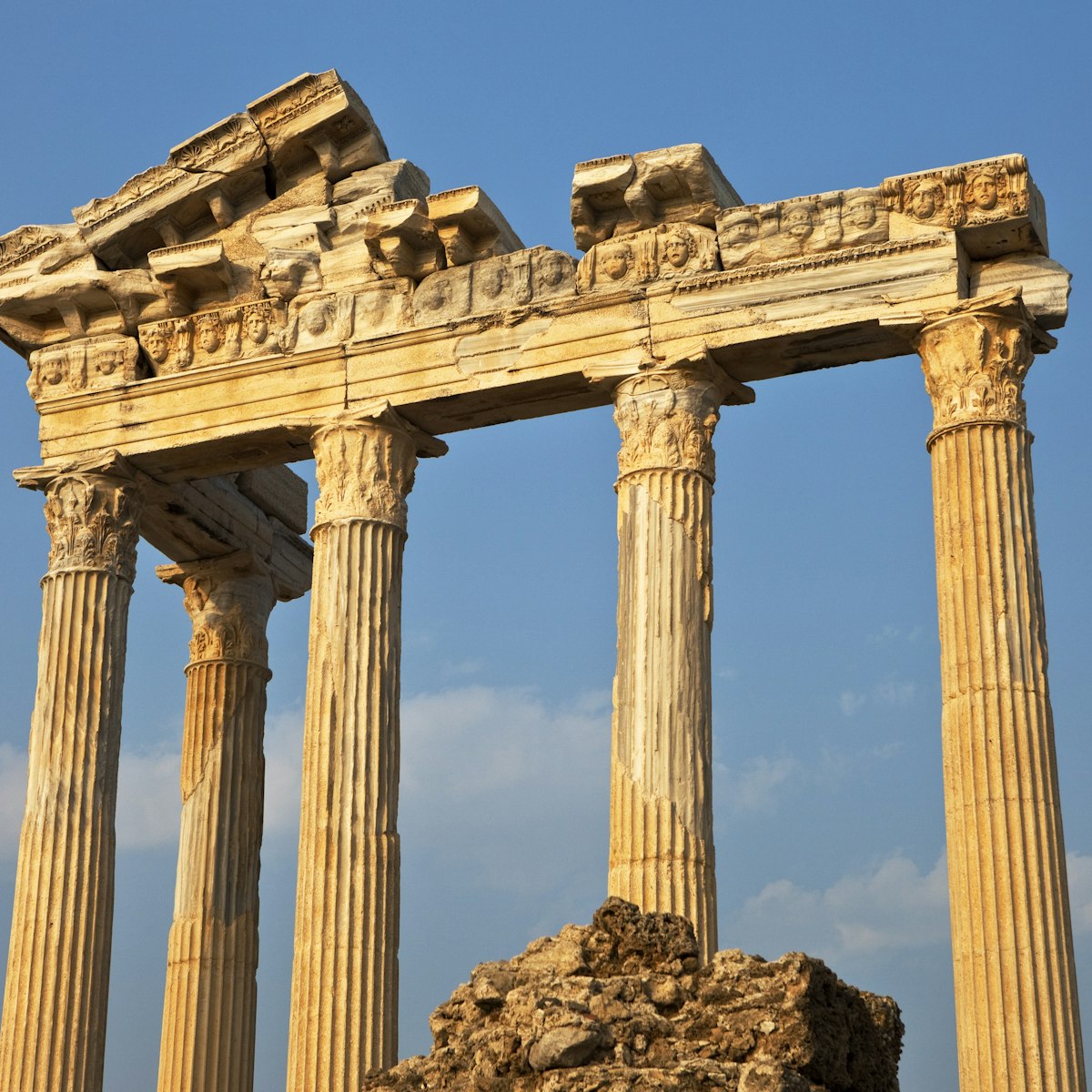People come in droves to this ancient site near the modern-day village of Belkıs for one reason: to view the awesome theatre, considered the best-preserved Roman theatre of the ancient world. It was built during Aspendos' golden age in the reign of Emperor Marcus Aurelius (161–80 AD), and was used as a caravanserai by the Seljuks during the 13th century. The history of the city, though, goes all the way back to the Hittite Empire (800 BC).
After touring the area in the early 1930s, Atatürk declared Aspendos too fine an example of classical architecture to stay unused. Following a restoration that didn't please many historians, the 15,000-seat theatre became a venue once again. Operas, concerts and events, including the Aspendos Opera & Ballet Festival and Antalya's film festival, are staged here. The acoustics are excellent and the atmosphere at night is sublime.
Apart from the theatre, the ancient city ruins are extensive and include a stadium, agora and 3rd-century basilica, although there is little left intact. To reach them, follow the trail to the right of the theatre entrance. Further on are the remains of the city's aqueduct.
Aspendos lies 47km east of Antalya and 3km north of Belkıs. If driving, immediately on your right as you exit the D400 for Aspendos is a restored Seljuk-era switchback bridge with seven arches spanning the Köprü River. It dates from the 13th century but was built on an earlier Roman bridge.
Most folk visit Aspendos on a tour from Antalya or Side. Otherwise catch any dolmuş that runs between Antalya and Side along the D400 and get off at the Aspendos turn-off, from where you can walk (45 minutes) or hitch the remaining 4km to the site. Taxis waiting at the highway junction will take you to the site for (an outrageous) ₺20.





